Criminal Law 1, University Case Study: Abercrombie & Fitch Lawsuit
VerifiedAdded on 2022/08/12
|6
|1179
|17
Case Study
AI Summary
This case study analyzes the Abercrombie & Fitch lawsuit regarding religious discrimination and workplace harassment. The case involves Umme-Hani Khan, a Muslim employee, and the company's 'look policy' which conflicted with her hijab. The analysis examines the legal complexities, including the EEOC's involvement and the application of Title VII. The document highlights the court's decision, emphasizing the importance of employers accommodating religious practices and avoiding discriminatory practices. It discusses the repercussions for both parties, focusing on the employer's responsibility to engage in good faith efforts to accommodate religious beliefs. The study also addresses the implications for managers and the need for consistent and reasonable application of company policies to avoid future claims of discrimination. The case underscores the potential risks for employers who may inquire about religious beliefs and emphasizes the need for caution and legal counsel when dealing with religious accommodations in the workplace. It also references the legal precedents and the potential impacts of the case on future decisions. This assignment offers a comprehensive overview of the legal issues and the implications of the Abercrombie & Fitch case.
1 out of 6
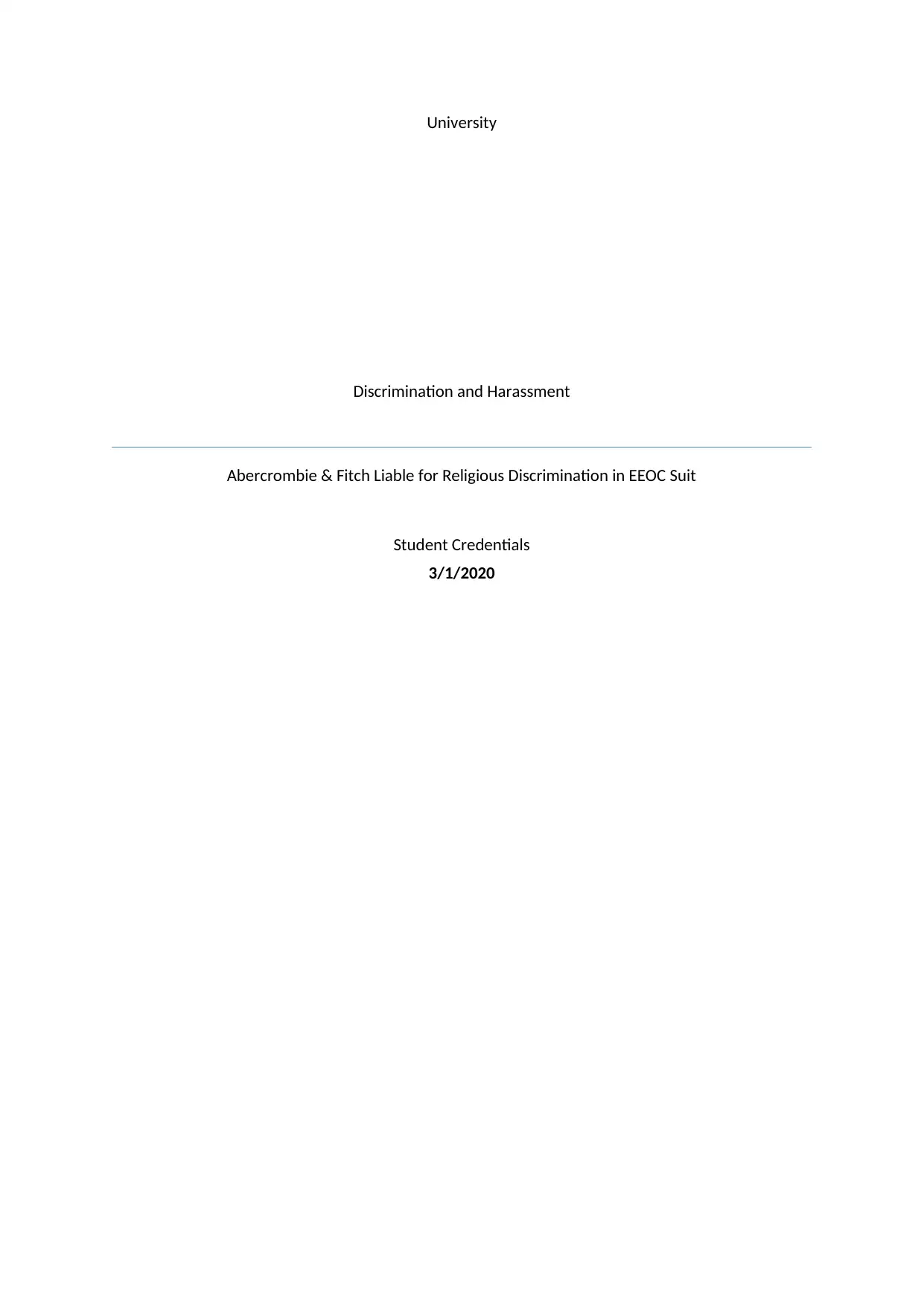
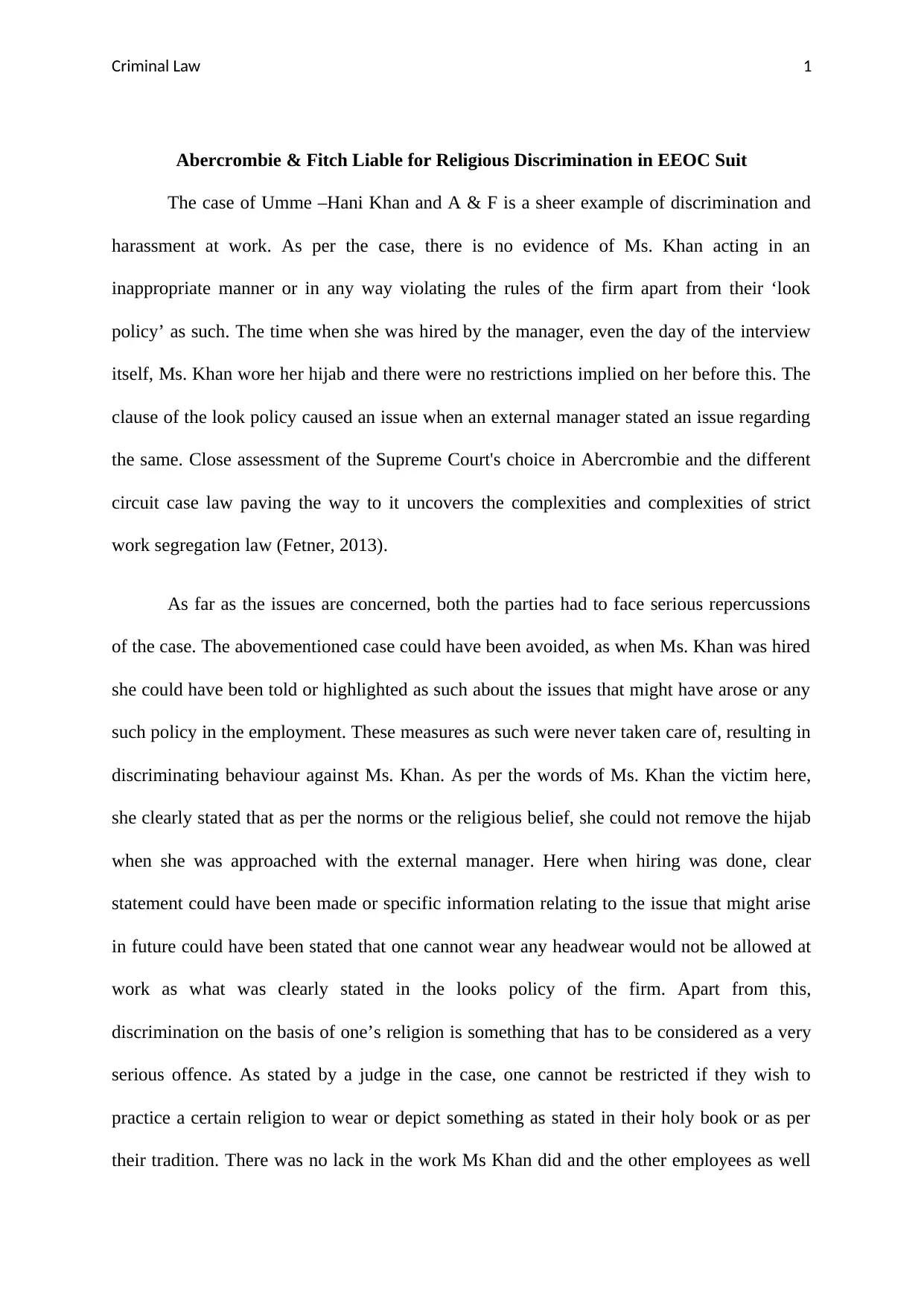
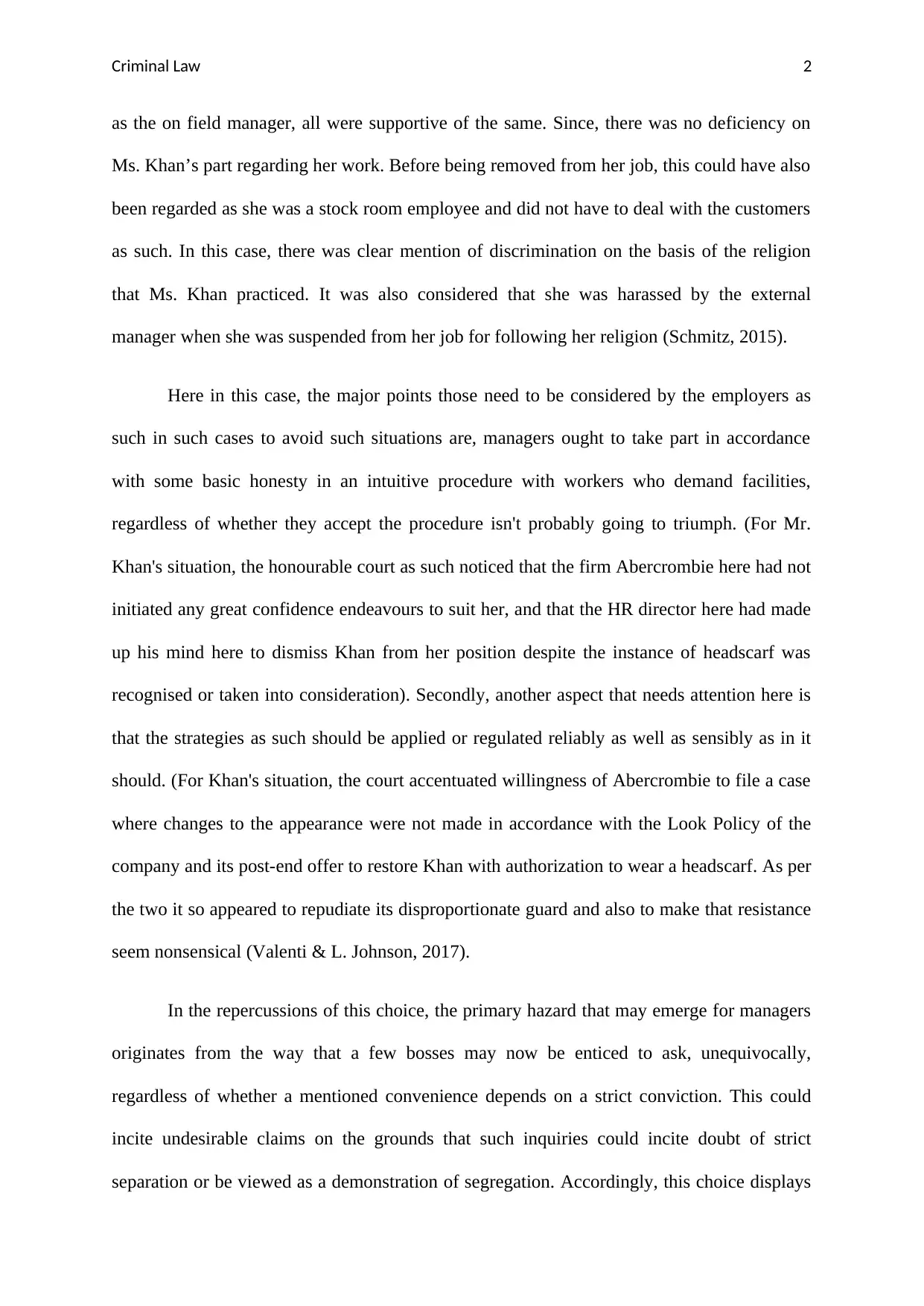

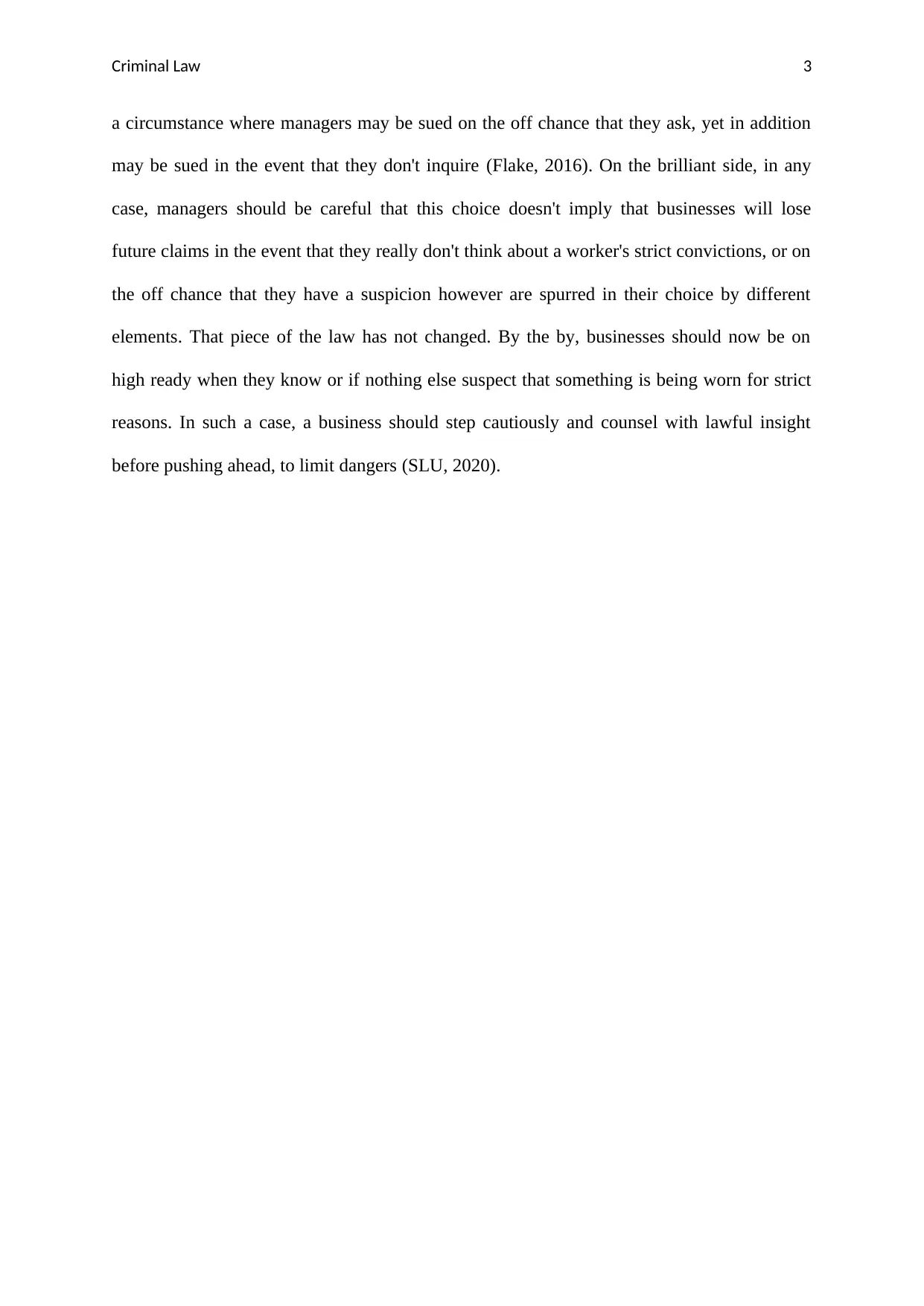
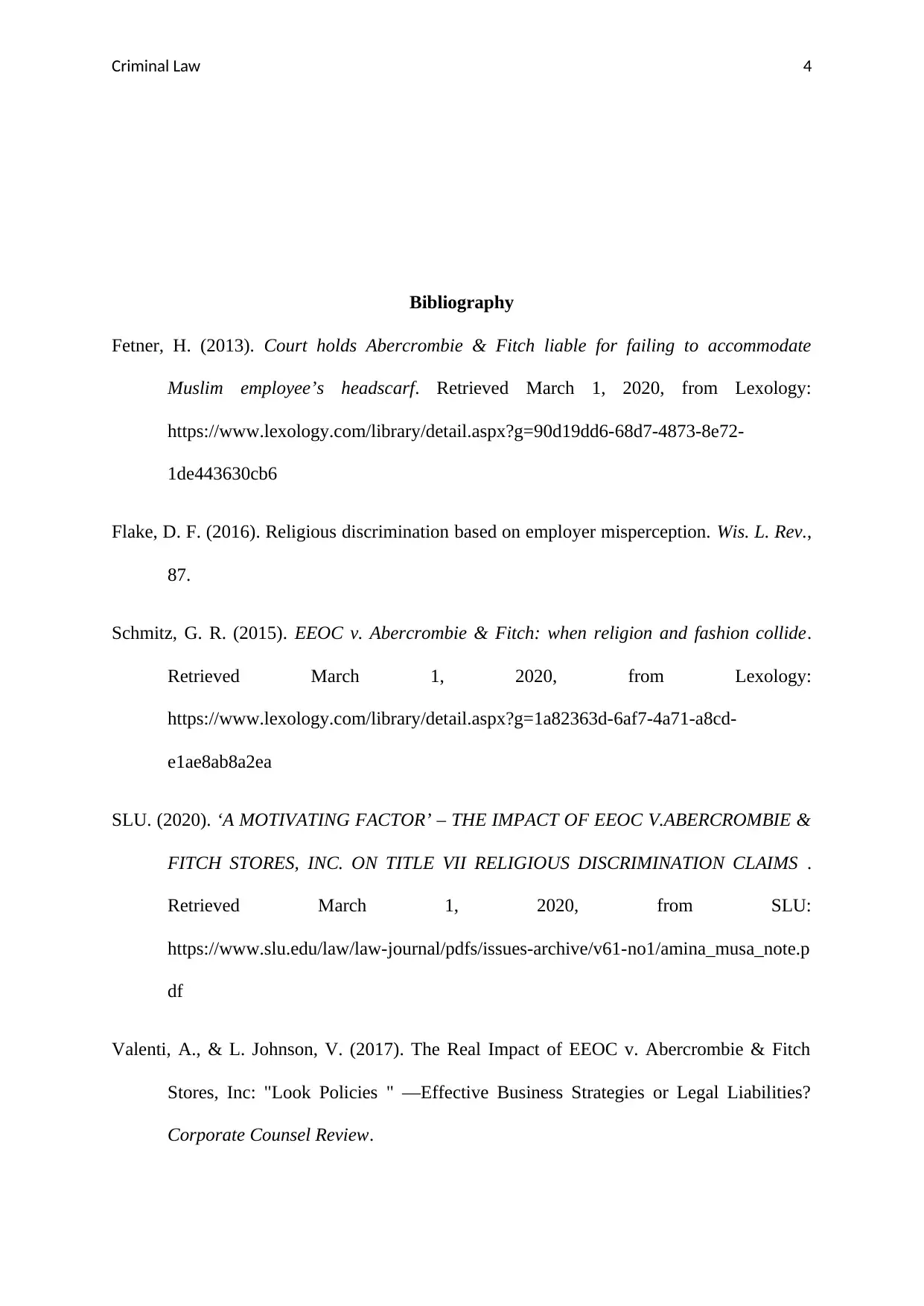
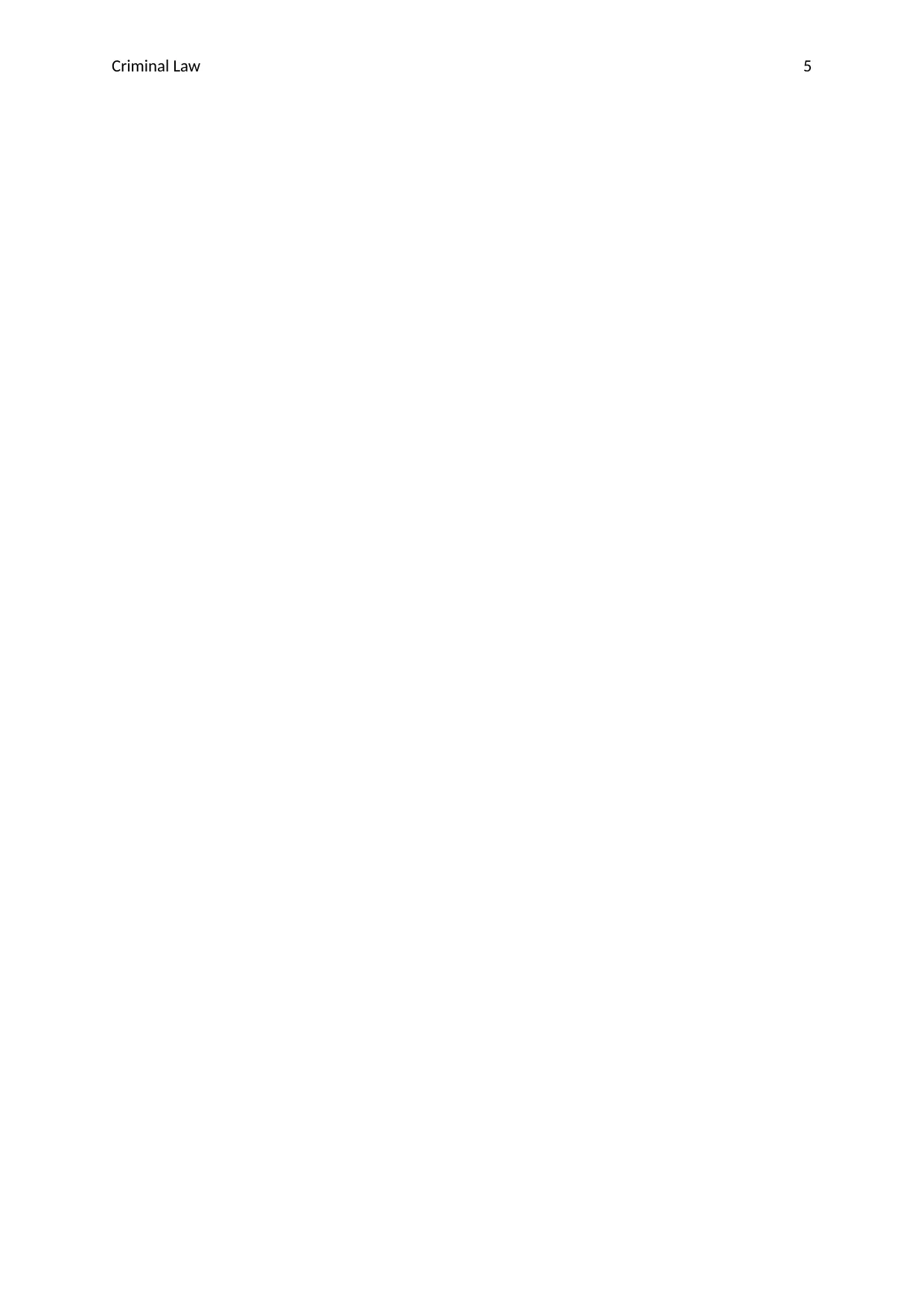




![[object Object]](/_next/static/media/star-bottom.7253800d.svg)